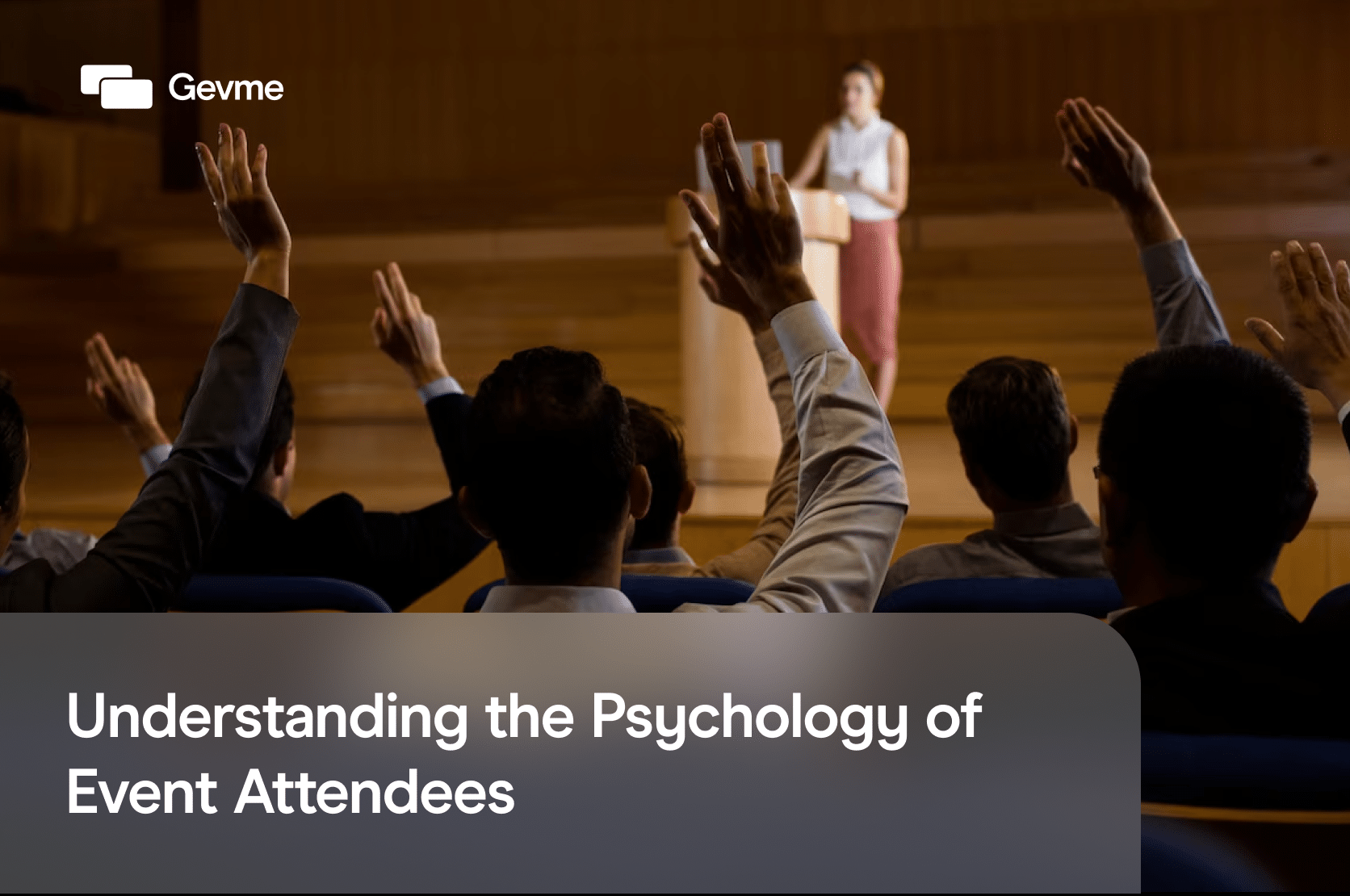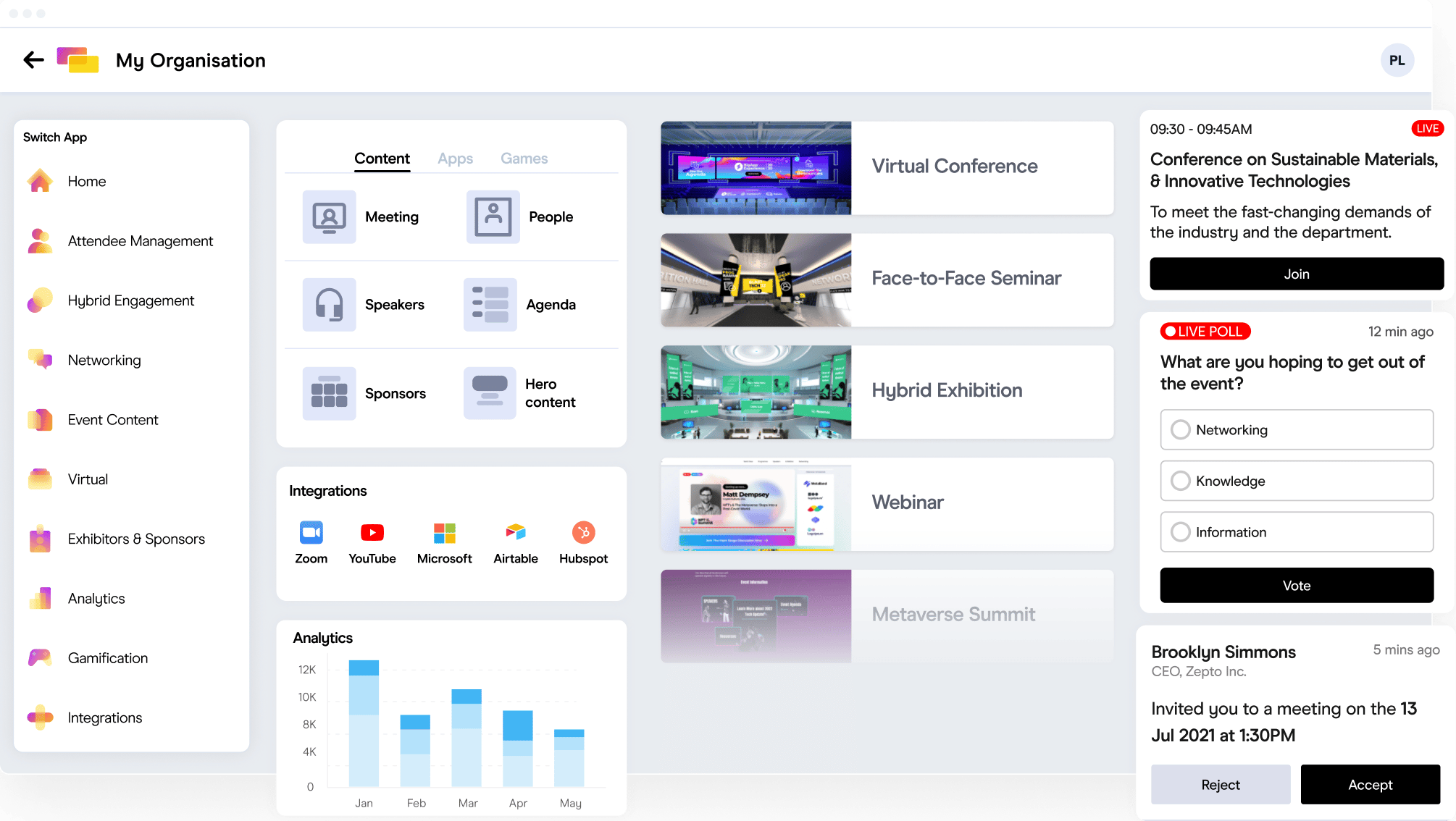As an event planner, delving into the psychology of event attendees becomes a fundamental aspect of creating truly successful events. It goes beyond simply organizing logistics and executing tasks; it involves understanding the intricate factors that influence event attendees.
By comprehending the psychology of event attendees, you gain valuable insights into their preferences, needs, and expectations. This knowledge empowers you to design and deliver an experience that not only meets but exceeds their highest aspirations. You become capable of crafting an event that resonates deeply with event attendees on both conscious and subconscious levels, fostering a sense of connection and engagement.
How to Better Understand Event Attendees
The decision of an individual to attend an event is influenced by a wide array of factors, ranging from personal interests and networking opportunities to the relevance of the event content and the perceived value it offers.
As an event planner, recognizing and understanding these push factors can significantly enhance your ability to organize events that effectively attract your intended audience.
For instance, if your research indicates that networking opportunities are a major motivating factor for your target audience i.e. potential event attendees, you can incorporate dedicated networking sessions, interactive activities, and facilitated introductions into your event program. Similarly, if educational content is a key driver, you can ensure that your event features expert speakers, insightful workshops, and thought-provoking panel discussions that address relevant industry topics.
Moreover, by leveraging technology and analyzing event attendee data, you can gather valuable feedback and insights on event attendee satisfaction during and after the event. This feedback allows you to make data-driven decisions for future events, fine-tune your offerings and ensure continuous improvement in the overall event experience.
Ways to reach out to a target audience:
- Analyzing demographic and behavioural data: This involves collecting and analyzing data on potential event attendees’ age, gender, income, education, occupation, and other relevant factors. By examining these demographic factors, organizers can identify patterns and trends in potential event attendees’ behaviour and preferences, which can be used to tailor the event to better meet their needs.
- Psychographic profiles: based on attendees’ personalities, values, interests, and lifestyle choices. By segmenting the audience into different psychographic profiles, organizers can better understand attendees’ preferences and develop targeted marketing campaigns to reach them.
- Conducting surveys: Whether conducted on the go or post-event, surveys allow organizers to gather valuable feedback on event attendees’ preferences, expectations, and overall satisfaction with the event. By analyzing the responses, organizers can gain insights into event attendees’ interests, motivations, and values, which can inform future event planning.
- Content Marketing: Develop high-quality, informative content and make note of the feedback on those content pieces to fine-tune your approach. Publish blog articles, create videos, podcasts, or infographics that address their pain points, provide valuable insights, and establish your credibility as an industry expert.
Why is this important? The importance of using these methods to analyze event attendee characteristics and adapt accordingly cannot be overstated. By gaining deep insights into the preferences, interests, and needs of event attendees, event organizers can personalize every aspect of their events to align with these expectations.
Benefits of curating an event with attendees in mind:
Reputation and Branding
Events that have a strong reputation for delivering high-quality content and experiences are more likely to attract event attendees. According to a survey by Eventbrite, the most common reason for attending an event is the desire for a unique experience (71% of respondents).
This highlights the importance of creating an event that stands out from others and provides something different and exciting for event attendees. Curating a reputable event organization begins with a single successful event. Of course, with the use of technology, event planners can elevate the branding of their services and advertise their strengths and individuality.
Digital and offline events alike, curating an attractive event can be challenging. Whether it is through following event trends or investing in event courses, event organizers can actively upgrade their knowledge and skills regarding the latest trends such that they do not fall behind. By keeping up with the industry, planners also expose themselves to a wide array of resources to use and examples to emulate, resulting in better organization.
Exclusivity is also a powerful motivator for event attendance. As the term suggests, the extent to which an event is exclusive can affect audience demand. The perception that an event is exclusive or limited in availability can create a sense of urgency and FOMO (fear of missing out) in potential event attendees. A study by EventMB found that 72% of event planners believe exclusivity is a major factor in driving event attendance. While it may not be recommended to decrease attendee slots to heighten demand, organizers can look into attractive incentives for attendees.
In addition to these psychological factors, practical considerations such as location, timing, and cost can also have a significant impact on attendance. For example, a survey by Cvent found that the top reason for not attending an event was cost (36% of respondents). The convenience of attendees in as many ways as possible allow the event organizers to build up a reliable and considerate brand. Thus, a considerable aspect of event reputation would be the practical logistics involved, down to the details.
Audience Segmentation
Audience segmentation is the process of dividing your event attendees into different groups based on their characteristics, interests, and behaviours. By understanding audience segments, you can tailor your event to their specific needs and preferences. This can involve understanding different age groups, gender, culture, interests, etc. to create a personalized and more enjoyable experience for event attendees.
According to a report by Eventbrite, events with personalized and targeted messaging have a higher click-through rate than those with generic messaging. The same report also finds that events that use audience segmentation strategies see on average a 19% increase in revenue and a 21% increase in attendance compared to events that do not use segmentation.
Segmentation can also help event organizers create more effective event programming. By understanding the interests and preferences of each segment, organisers can curate a program that appeals to a wider range of attendees. If a segment consists of young professionals, organizers can tailor their messaging to focus on the networking and career development opportunities available at the event, while a segment made up of families with children may be more interested in the range of family-friendly activities available. By understanding the purposes and characteristics of event attendees through segmentation, organizers are directly appealing to their area of interest. Not only will the attendees be compelled to attend the event, but they will also gain valuable experiences from it.
Segmentation not only benefits event attendee satisfaction, but it also helps event organizers optimize their event logistics. By understanding the specific needs and preferences of each segment, organizers can design an event that is more accessible and convenient for attendees.
For example, if a segment consists of senior citizens, organizers may choose a venue with more inclusive accessibility, adding services such as ushers or interactive screens, or even scheduling it during the daytime when it is more convenient for them to attend.
Detailed planning through segmentation presents the event organizer to be sincere in their presentation and considerate in their provision of service, overall creating a positive and memorable impression on attendees.
Measuring Attendee Satisfaction
Lastly, it’s important to measure event attendee satisfaction through surveys and feedback to understand what worked well and what can be improved for future events. This data can also be used to make more informed decisions when planning future events.
Creating a positive and memorable experience for attendees is crucial in ensuring that they not only attend future events but also recommend them to others. According to a survey by Eventbrite, 78% of respondents said that they are more likely to attend an event if they had a positive experience at a similar event in the past. Leaving a lasting, positive impression on attendees goes a long way.
One way that organizers can create a positive experience is by paying attention to the little details that can make a big difference. For example, having comfortable seating, providing ample refreshments, and ensuring that the venue is well-lit and ventilated can all contribute to a more enjoyable experience for event attendees. Virtual events can be trialled beforehand to prevent any lags and hiccups in the course of the event, maintaining a smooth and efficient process.
Enhanced networking opportunities
Enhanced networking opportunities are a significant benefit that arises from curating an event with event attendees in mind. Networking plays a pivotal role in professional growth, collaboration, and the exchange of ideas. By understanding attendees’ characteristics and preferences, event organizers can create an environment that fosters meaningful connections and facilitates valuable interactions among participants.
Curated networking opportunities go beyond traditional socializing and aim to connect individuals who share common interests, goals, or industries. These targeted networking sessions can take various forms, such as structured networking activities, themed breakout groups, or algorithm-based matchmaking.
Structured networking activities provide attendees with dedicated time and space to engage with one another. For example, speed networking sessions allow participants to meet a series of individuals in short, timed intervals, enabling them to make initial connections and exchange contact information efficiently. These activities promote interaction and facilitate the exploration of potential collaborations or business opportunities.
In recent years, algorithm-based matchmaking has gained popularity as a way to optimize networking opportunities. Attendees provide information about their professional interests, expertise, and objectives during the registration process. Organizers then use this data to create personalized networking recommendations, suggesting potential connections based on shared interests or complementary backgrounds. This approach streamlines the networking process, ensuring that attendees are introduced to individuals who are most likely to offer meaningful collaborations or professional synergies.
Personalization
Personalization is indeed a crucial factor in creating a memorable event experience. When an event is tailored to attendees’ interests and preferences, they feel a sense of value and investment in the overall experience. In today’s landscape, interactive activities have become increasingly popular and can significantly enhance engagement and create lasting memories for attendees. Leveraging technology, event organizers have a plethora of options to explore, such as incorporating games, workshops, and demonstrations into the event program.
Interactive activities inject an element of excitement and interactivity, enabling attendees to actively participate and immerse themselves in the event. These activities break away from traditional passive listening and encourage attendees to engage, collaborate, and contribute actively. By involving attendees in hands-on experiences, organizers tap into their natural inclination for interaction and stimulate their cognitive and emotional involvement.
For example, a study conducted by Bizzabo revealed that 91% of event attendees highly value opportunities to interact with event speakers and experts. This underscores the importance of providing avenues for direct engagement and dialogue between attendees and industry thought leaders. To meet this demand, event organizers can introduce interactive elements throughout the event. This can include encouraging speakers to break the fourth wall and engage directly with the audience, creating Q&A sessions or panel discussions that invite attendee participation, or incorporating live polling and audience response systems to gather real-time feedback and foster an inclusive environment.
Creating a positive and memorable experience for attendees is a critical aspect of event planning, as it directly impacts the success and future prospects of an event. By focusing on the attendee experience, event planners can create an environment that is not only informative and productive but also enjoyable and memorable.
When event attendees have a positive experience, they are more likely to become regular attendees and recommend the event to others.
Word-of-mouth promotion is another significant benefit of creating a positive attendee experience. Satisfied attendees are more likely to share their positive experiences with others, whether through informal conversations, social media posts, or online reviews. Positive word-of-mouth can significantly impact the reputation and visibility of an event, attracting new attendees and expanding its reach.
By consistently delivering exceptional event attendee experiences, event planners can build a loyal and engaged community, attract new participants, and establish their event as a must-attend in the industry.








